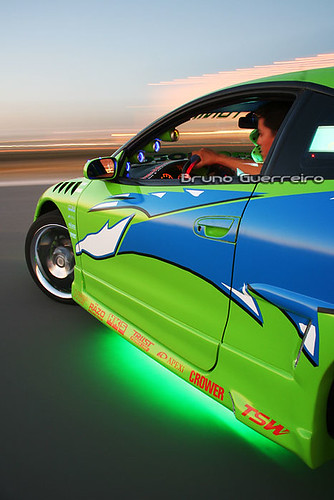The future of the automobile is a controversial topic, with some advocates arguing that the car has no future, and others that the car will in the future supplant most other forms of transport.
There are significant challenges in the near future to continued use of the car:
- Petroleum refining and car use are major factors in pollution and greenhouse gas emissions.
- 50-70% of US oil production is consumed by cars and trucks. This is more due to the size, weight, shape and power of conventional cars than to necessity (See Messerschmitt KR200).
- Cars are one of the most dangerous forms of transport. 1 million people die each year in car accidents worldwide, of which around 40,000 in the US (roughly the equivalent of one event the scale of 9/11 every month). The car is one of the major killers of people under 40.
- Increasing population and prosperity tends to increase traffic congestion.
Energy sources
- Hybrid cars (including small gasoline or diesel models) and more advanced combustion engines (eg. gas turbines) will improve fuel efficiency. Toyota intends to have hybrid versions for all its models by 2012, including the hybrid Toyota Prius which is already available. Ford intends to make five hybrids available by 2008. Both Ford and GM have also begun to develop hybrid SUVs. The next step in hybrid technology is Plug-in hybrid electric vehicles. A 2006 article, "Hybrid Vehicles Gain Traction", in Scientific American (April 2006), co-authored by Joseph J. Romm and Prof. Andrew A. Frank, argues that hybrid cars that can be plugged into the electric grid (Plug-in hybrid electric vehicles) will soon become standard in the automobile industry.
- Utilization of waste heat from the engine as useful mechanical energy through exhaust powered steam, stirling engines, thermal diodes or etc..
- Dual-mode vehicle or vehicles able to platoon that use relatively small electric motors and fuel supplies or battery reserves for door-to-door service off electrically powered arteries. Some swap battery packs to avoid waiting associated with recharging. This also avoids deep dischage that shortens battery life and makes a smaller and lighter battery pack with logistically infinite range using incremental energy sipping through frequent fully automatic battery exchange at speed. The monorail mode provides superior safety at very high speed.
- Battery electric vehicles have the potential of using locally available sustainable energy resources while at the same time reducing vehicle energy requirements by 1/2 to 1/4 when using batteries to store electricity. A new high-performance electric sports car, the Tesla Roadster has attracted much media attention[1] since its release in June 2006.
- Hydrogen cars could eventually be produced that use sustainable energy resources and water. The resulting hydrogen could be burned in an engine or converted back into electricity by a fuel cell and its support systems instead of a battery to be powered as an electric vehicle. Due to the additional conversion losses and added distribution and support logistics overall efficiency is currently not as good as current ICE ("internal combustion engine") vehicles. Rather it is far simpler and more efficient (by a factor of three to six by some estimates) to transmit locally available sustainable electricity directly into the batteries of a battery electric vehicle.
- Alternative fuels are being proposed : alcohol fuel, water (see hydrogen fuel), highly compressed air (see air car), garbage, hemp oil, magnetism, solar power, Tesla electric cars (with no car batteries), and high speed electric cars (freeway-capable).
[edit] Materials
- Duraluminum, fiberglass, carbon fiber, and carbon nanotubes may totally replace all steel in cars (potentially improving lightness and strength).
- Nanotechnology-enhanced cars will be stronger than steel which can help to reduce weight and better protect passengers.
[edit] Competing solutions
- Bicycle
- Electric motorcycles and scooters
- Walking
- Electric trains
- Trams, Subways, Trolleybuses and Renewable Energy Buses
- Personal Rapid Transit
- Public transport in general when utilisation is moderate or high
- Segway
The list of modes of transport above generally pollute less than the conventional (petrol) car. Additionally they are claimed to have other significant benefits in the following fields:
- Reduced traffic death tolls
- Space requirements, both for parking and driving (extra roads/lanes, sometimes cutting nature zones in half)
- Life-cycle resource usage, and pollution
- energy expenditure for production and driving
- air pollution, ground water pollution, toxic waste, noise pollution and climate change, through production, driving and disposal
- Social inclusion
- Economic and social equity
- Liveable streets and cities, towns and villages v.s. sprawl and car dependence
- For some solutions : Increased, regular, low-impact exercise, tailored to the needs of human bodies. This goes for public transport as well to the extent that they are combined in a multi-modal transport chain including walking or cycling.
The benefits of possible future cars, not yet in widespread use, like zero-emissions vehicles over these alternatives, would be
- Increased mobility in rural settings and in some other areas where traffic jams are not severe
- Possibly higher social status
- Overall a better provision for privacy
- Profit for the multinational firms producing cars, and possibly for their employees

0 comments:
Post a Comment